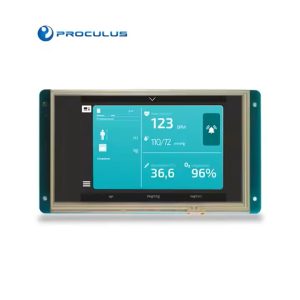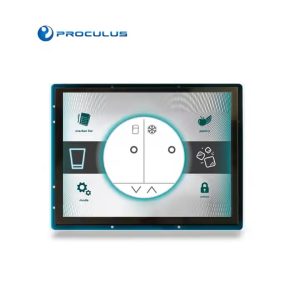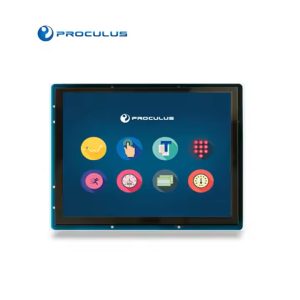A Guide on Computer on Wheels (COW) in Healthcare
In the ever-changing landscape of healthcare technology, the integration of computers has revolutionized the way medical professionals provide patient care. One such innovative solution is the Computer on Wheels (COW). This article explores the concept of COW in healthcare, its significance, and the benefits it offers to healthcare organizations.
Understanding the Computer on Wheels (COW)
A Computer on Wheels (COW) refers to a mobile computer workstation specifically designed for use in healthcare settings. It acts as a portable hub that provides medical professionals with mobile access to essential tools and information. By housing a computer, monitor, and power supply on a cart with wheels, COWs enable healthcare providers to carry technology with them as they move from one patient to another.
Components and Features
A typical COW consists of several key components that contribute to its functionality. These include a high-resolution display for viewing medical records, a central processing unit (CPU) for data processing, and a power supply to ensure uninterrupted usage. COWs often come equipped with additional features such as barcode scanners, built-in cameras for telemedicine, and wireless connectivity for seamless communication and data transfer.
Applications of COW in Healthcare
COWs have found diverse applications in healthcare, significantly improving various aspects of patient care and workflow efficiency.
1. Point-of-Care Documentation
One primary application of COWs in healthcare is point-of-care documentation. With a COW, healthcare professionals can directly input patient information into electronic health records (EHRs) at the bedside. This real-time documentation enhances accuracy, reduces the risk of errors, and improves workflow efficiency. Manual data entry at a later time is eliminated, ensuring that patient information is up-to-date and easily accessible.
2. Clinical Decision Support
COWs provide healthcare professionals with instant access to patient data and clinical decision support systems. By accessing EHRs, lab results, medication information, and allergies in real-time, medical staff can make informed decisions promptly. This access to critical data improves patient safety, facilitates faster diagnoses, and enhances overall care quality.
3. Telemedicine and Communication
COWs play a crucial role in telemedicine and communication within healthcare organizations. Through video conferencing, messaging, and collaboration tools, COWs enable healthcare professionals to connect with remote specialists and consult with patients remotely. Telemedicine is especially valuable in rural areas, where access to specialized care is limited. Efficient communication and collaboration among care teams lead to better coordination and improved patient outcomes.
Benefits of COWs in Healthcare
The implementation of COWs in healthcare settings leads to enhanced efficiency, workflow optimization, and improved patient experience.
1. Enhanced Efficiency and Workflow
With mobile access to information, healthcare professionals can retrieve and update patient data instantly using COWs, eliminating the need for multiple trips to stationary workstations. This streamlined approach saves time, reduces paperwork, and enables medical staff to focus more on direct patient care. The ability to access information on the go and document in real-time significantly improves workflow efficiency.
2. Seamless and Uninterrupted Care Delivery
COWs contribute to a better patient experience by enabling healthcare providers to spend more time at the bedside. With COWs, healthcare professionals no longer need to leave the patients’ room to access information, promoting seamless and uninterrupted care delivery.
3. Accuracy in Data Entry and Reduced Errors
COWs promote accuracy in data entry, minimizing the risk of errors that can occur with manual documentation. By entering data directly into electronic systems, healthcare professionals can reduce transcription errors and ensure the integrity of patient information. Additionally, COWs often come equipped with robust security measures to protect patient data, ensuring compliance with privacy regulations.
4. Customizable Display Options
One crucial aspect of a COW is its display. The quality and functionality of the display play a significant role in the overall usability and effectiveness of the system. When choosing a COW for your healthcare organization, it’s essential to consider the display options available.
Display Size and Resolution
The display size and resolution determine the amount of information that can be viewed on the screen, as well as the clarity and detail of the images displayed. A larger display size allows for more content to be displayed at once, while higher resolution ensures sharper and more accurate representation of medical records, lab results, and other critical information.
Display Brightness and Visibility
In healthcare environments, where lighting conditions can vary, it’s crucial to choose a COW with a display that offers sufficient brightness and visibility. A bright display ensures that medical professionals can view information clearly, even in well-lit or brightly lit areas. Additionally, displays with anti-glare or matte coatings help reduce reflections and improve visibility in environments with overhead lighting or sunlight.
Touchscreen Functionality
A touchscreen display adds an extra layer of convenience and usability to a COW. It allows healthcare professionals to interact directly with the screen, eliminating the need for an external mouse or keyboard for certain tasks. A responsive and accurate touchscreen ensures smooth navigation and efficient data entry.
Adjustable Mounting and Viewing Angles
Optimal ergonomics are essential when using a COW for extended periods. The display should be adjustable to accommodate different viewing angles, ensuring comfortable and strain-free use for healthcare professionals. The ability to adjust the display height, tilt, and rotation allows for optimal positioning based on individual preferences and requirements.
5. Durability and Infection Control
In healthcare settings, COWs need to withstand the rigors of daily use and frequent cleaning to maintain a high standard of infection control. When selecting a COW, it’s crucial to consider the durability and ease of cleaning of the display.
6. Integration with Other Systems
The display of a COW should seamlessly integrate with the systems like Android and software used in healthcare organizations. Compatibility with electronic health record systems, clinical decision support software, telemedicine platforms, and other applications ensures smooth data transfer and efficient workflow.
Remember, each healthcare organization has unique requirements and preferences. Research and evaluate different COW options to find the perfect solution that meets your specific needs, ensuring seamless integration and maximizing the benefits of this innovative technology.
Our Support
If you’re looking for a COW computer, Proculus is a leading provider of reliable all-in-one android solutions with various sizes. They offer a wide range of specialized modules that are expertly designed for seamless integration with COWs.
They are equipped with high-performance processor and Android O.S, providing healthcare professionals with the flexibility and convenience of a computer workstation on wheels, while delivering the durability and performance required in healthcare environments.
Proculus modules are built with high-quality hardware and include advanced features that ensure healthcare professionals can rely them to deliver efficient and safe patient care. Whether it is seamless integration with electronic health records, real-time access to clinical decision support systems, or the ability to conduct telemedicine consultations, we provides reliable technology that enhances workflow, improves communication, and optimizes healthcare delivery.

 English
English


